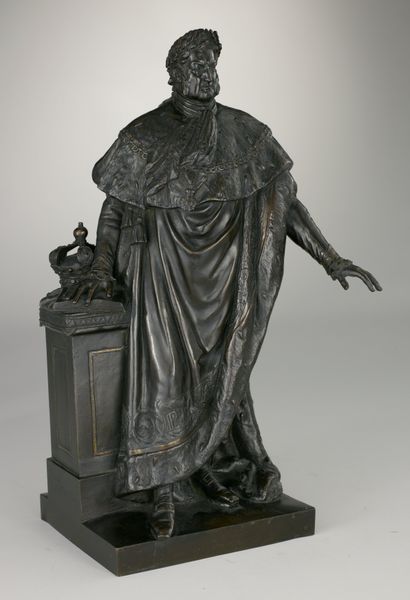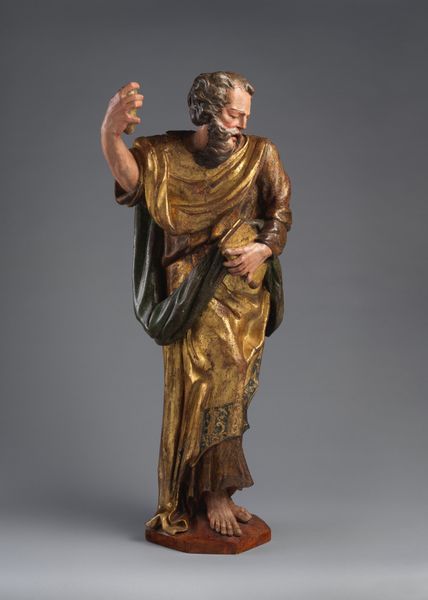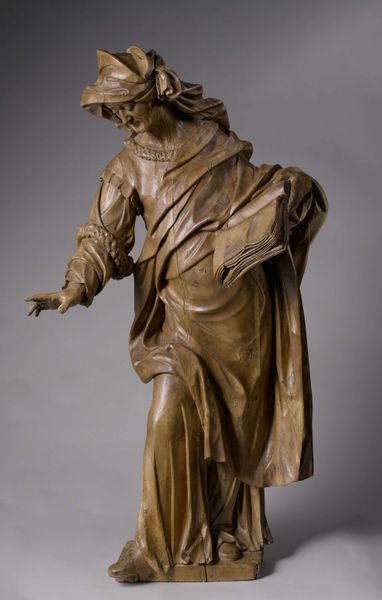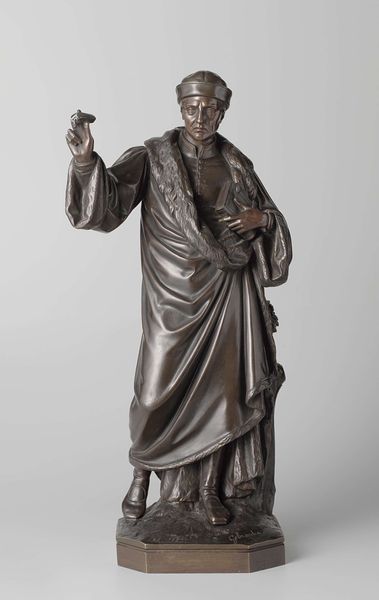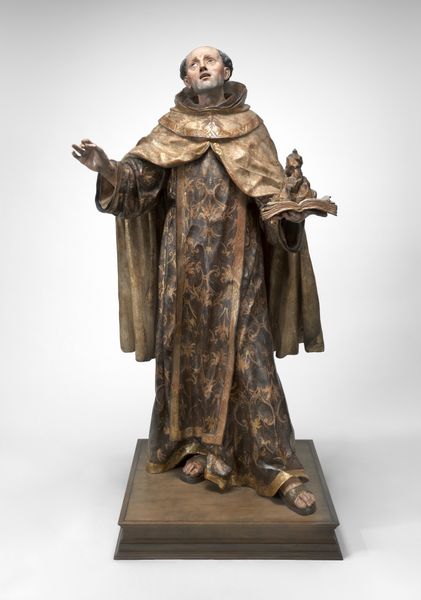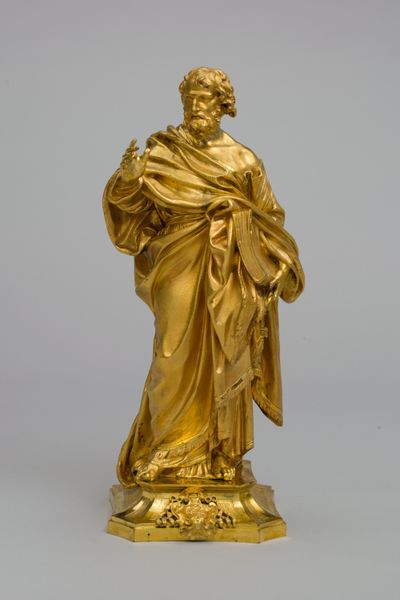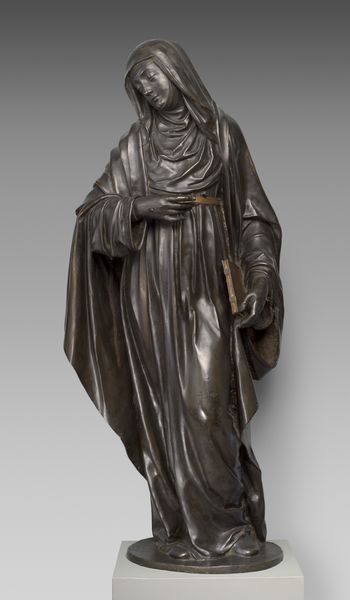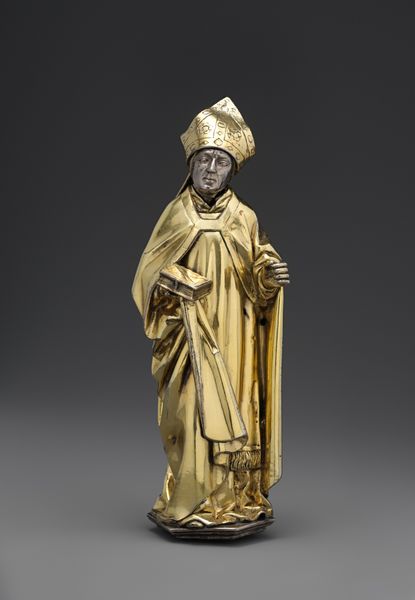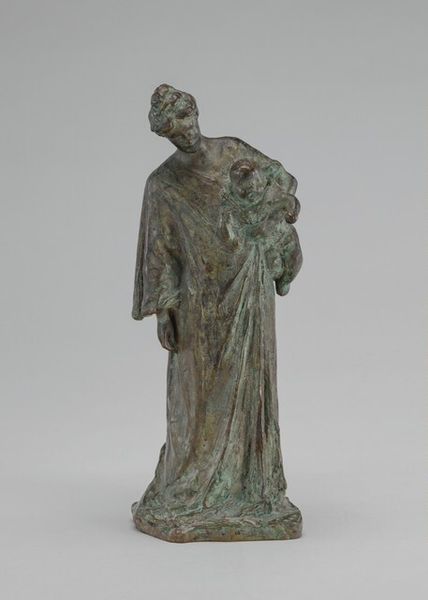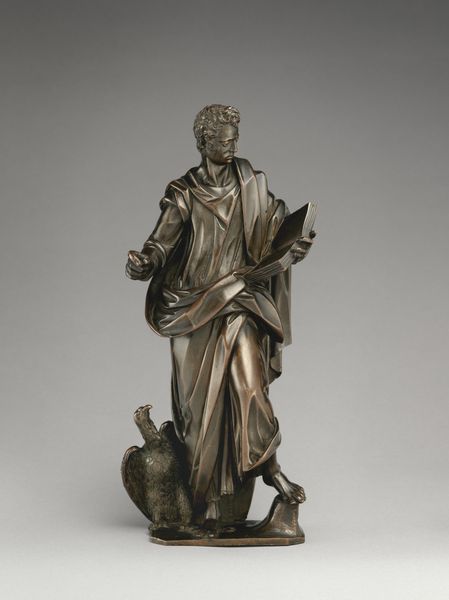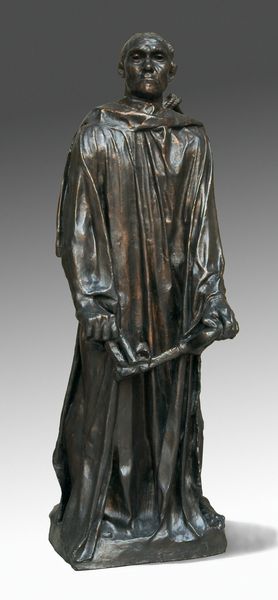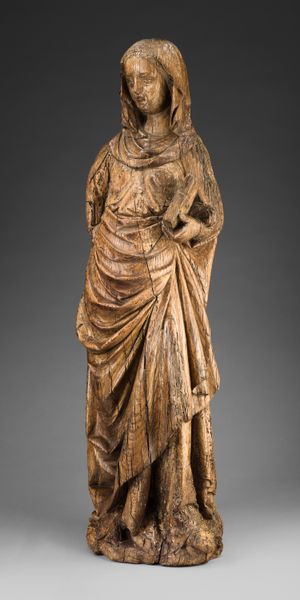
guilding, glass, sculpture, wood
#
portrait
#
baroque
#
sculpture
#
guilding
#
figuration
#
glass
#
sculpture
#
wood
#
history-painting
#
statue
Dimensions: 49 × 34 5/8 × 16 1/2 in., 120 lb. (124.5 × 87.9 × 41.9 × 54.4 cm)
Copyright: Public Domain
Curator: Attributed to José Montes de Oca, this sculpture presents Saint Benedict of Palermo, dating to around 1734. Crafted from wood, glass, and gilding, it currently resides at the Minneapolis Institute of Art. Editor: The contrast between the dark, almost solemn figure and the shimmering gold robes strikes me immediately. There's a regal quality despite what I imagine was a more humble existence. Curator: Indeed. The gilding plays an essential role, elevating the material reality of the wood. Its application highlights form, particularly in the dramatic drapery. Editor: That gilded robe seems to represent more than just wealth or status. The gesture of holding the book, his open palms – I read these as symbols of offering, teaching, perhaps even seeking understanding across cultures. Benedict was, after all, a significant figure in bridging divides. Curator: Precisely. Notice the sculptor’s meticulous attention to the rendering of fabric, how each fold articulates the volume and depth. This detail contributes to a visual rhythm. Editor: For me, the cultural memory imbued here is potent. He stands as a potent figure of redemption, from enslavement to sainthood. It also speaks volumes of a complex dialogue between faith and colonialism. Curator: A tension definitely exists in its symbolism; it’s this complexity that fascinates. We must acknowledge how artistic traditions merge here: a Baroque visual language serving an individual narrative. Editor: Ultimately, “Saint Benedict of Palermo” stands not just as a sculpture, but as a mirror reflecting society's capacity for both subjugation and veneration. Curator: Yes, its formal choices elevate and illuminate this duality beautifully. Editor: Absolutely. The work lingers in your mind long after you've moved on.
Comments
minneapolisinstituteofart about 2 years ago
⋮
Saint Benedict of Palermo (1524-1589) was the first Christian saint of African origin to be canonized in modern times. He was born in Sicily (then part of Spain) of parents who were freed slaves, and who were said to have come from Ethiopia. Saint Benedict was admired as a model of extraordinary religious devotion, wise counsel and spiritual leadership. After his death a grassroots movement to make him a saint ensued. By the early 1600s Saint Benedict was widely venerated in Italy, Spain, and Latin America. José Montes de Oca's statue, carved in Sevilla in the 1730s, masterfully captures Saint Benedict's charismatic personality. The glass eyes and bone teeth add to the saint's life like quality. Yet it is the concentrated facial expression, Benedict's welcoming gesture of his spread arms, the movement of his cowl and his contrapposto stance, by which Montes de Oca renders the saint's inspiration within the statue's every inch.
Join the conversation
Join millions of artists and users on Artera today and experience the ultimate creative platform.
